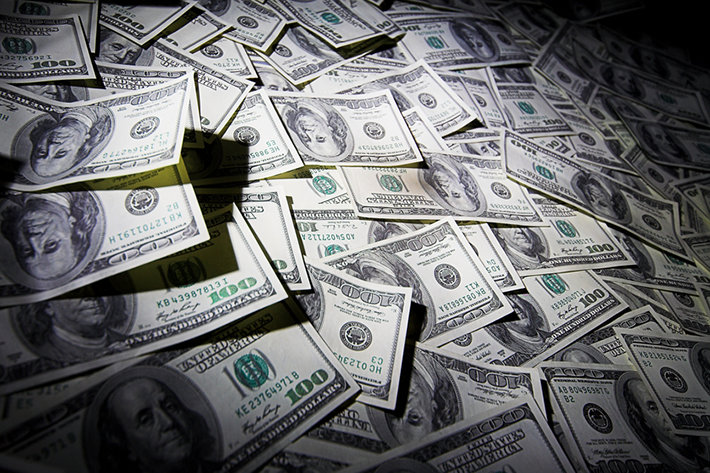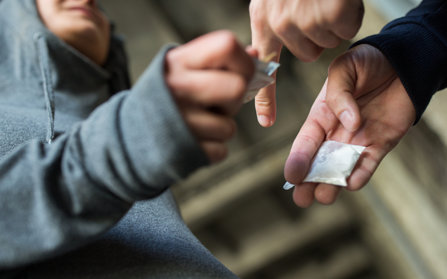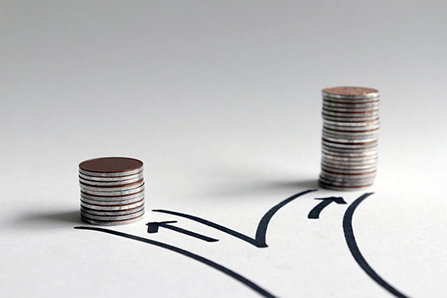The Financial Cost of Addiction

The headlines in U.S. News last week read, “Americans Spent $146 Billion on Illegal Drugs in 2016.” That’s a shocking figure. It’s a figure that drives home just how enormous our country’s drug problem is.
But at the same time, a figure like that creates a lot of questions. Just what exactly are addicts spending their money on? Which drugs cost what? Which ones are being purchased more in recent years, and which ones (if any) are being purchased less?
The Sheer Cost of Drug Addiction
The U.S. News article reports on a RAND Corporation research study. The study sought to determine the costs of addiction. The study also sought to find out which drugs are being used the most. They examined drug spending from 2006 to 2016, seeking to analyze fluctuating trends in what dollar amounts Americans were spending on which drugs.
“People who use drugs in the United States spent on the order of $150 billion on cocaine, heroin, marijuana, and methamphetamine…”
In a concerning revelation from the RAND Corporation, “People who use drugs in the United States spent on the order of $150 billion on cocaine, heroin, marijuana, and methamphetamine in 2016. The marijuana market is roughly the size of the cocaine and methamphetamine markets combined, and the size of the retail heroin market is now closer to the size of the marijuana market than it is to the other drugs.”
One of the key aims of the research was to show that, while the opioid crisis is a concerning drug problem which warrants the attention it is given, the other drug problems are similarly destructive, particularly on an economic scale.
Greg Midgette, an assistant professor of criminology and criminal justice at the University of Maryland and the RAND study’s lead author, commented on the research. “Obviously, we need to continue to pay really close attention to and come up with a solution to the different forms of the opioid crisis, but that doesn’t mean that we can ignore methamphetamine and cocaine. Statistically, if the opioid crisis didn’t exist, we’d be very concerned about methamphetamine—we would have been two years ago.”
Total Expenditures for Several Major Drugs

Let’s take a look at what Americans are spending on each of the major drugs. The total amounts are pretty shocking:
- Methamphetamine. In 2016, there were 3.2 million chronic meth users, up from 2.2 million meth users in 2006. Users spent an estimated $44 billion on meth in 2016, as compared to $32 billion in 2006. The average price for meth was $171 per gram in 2016. That’s the cheapest it’s been in a long time, possibly the cheapest ever; and that drop in cost might be why spending on meth went up. Supply and demand are applicable in the drug market too.
- Heroin use rose by 40 percent between 2006 and 2012. The result was total spending on heroin reaching about $43 billion in 2016, a new highest ever. Estimates indicate that about 2.3 million Americans use heroin. Many of these are individuals who started with pharmaceutical opioids; individuals who switched to heroin when they could no longer afford or quickly get opioid pills.
- Cocaine spending fell about 60 percent between 2006 and 2013, the only drug examined in the study to drop in sales from 2006 to 2016.
- Marijuana sales soared. From 2006 to 2016, users went from spending $34 billion on marijuana to $52 billion. In 2016, about 32 million people admitted to using marijuana at least once in the last month, while 22.8 million admitted to being chronic users.
- For a substance like alcohol, it is more difficult to determine just how much addicts spend on alcohol. We can’t look at total alcohol sales because lots of people who do not struggle with alcohol dependence also purchase alcohol. We can, however, look at the overall economic burden of alcohol misuse on our country. According to the National Institute on Alcohol Abuse and Alcoholism, the total financial burden of alcohol misuse on the U.S. in 2010 was $249 billion. And there’s no reason to believe that number has come down since then.
For the most part, spending on drugs is up, even where prices have fallen. What does that tell us? It tells us that addiction is a far more significant problem in the U.S. than ever before.

Investing in Addiction Treatment Is an Investment in a Better Society
According to the National Institute on Drug Abuse, “Every dollar invested in addiction treatment programs yields a return of between $4 and $7 in reduced drug-related crime, criminal justice costs, and theft. When savings related to healthcare are included, total savings can exceed costs by a ratio of 12 to 1.”
The article goes on to talk about how each individual addict experiences significant savings in the long run as a result of investing in addiction treatment. That’s because the person experiences fewer interpersonal conflicts, fewer legal fees, fewer health problems, fewer drug-related accidents, higher workplace productivity, greater likelihood of a pay raise and advancement in their career, etc.
Not only is residential addiction treatment the right answer to helping someone overcome a drug habit, but it is also the sensible choice, economically. Our society wins when people get off of drugs. When people get off of drugs, that benefits the socio-economic condition of our nation. It also reduces crime. It reduces drug problems. It improves the American family unit, and it improves our communities too.
Helping Your Loved One Get Better
If you have a loved one who is struggling with drug or alcohol addiction, you must get them help as soon as possible. Not only will your loved one’s addiction likely ruin their finances, but such a habit will most likely ruin several other areas of their life too.
Residential drug and alcohol rehab centers offer the best return on investment of all of the different, proposed methods of addressing addiction and drug use. Don’t let your loved one ruin their finances or the family finances any further. Don’t let them ruin their life over a drug problem. Get your loved help from a long-term, residential drug treatment center today.
Sources:
- https://www.rand.org/pubs/research_reports/RR3140.html
- https://www.usnews.com/news/healthiest-communities/articles/2019-08-20/americans-spent-146-billion-on-illegal-drugs-in-2016-study-says
- https://www.niaaa.nih.gov/alcohol-facts-and-statistics
- https://www.drugabuse.gov/publications/principles-drug-addiction-treatment-research-based-guide-third-edition/frequently-asked-questions/drug-addiction-treatment-worth-its-cost


 ®
®